Inflatable paddleboards are everywhere you look these days, and it’s understandable why. These boards have opened the world of SUP ownership to condo dwellers and compact car drivers, as well as those looking to bring their paddleboard on planes or on hikes into remote access points.
Don’t be deceived by the paddleboards you most commonly see at the put-in, though. Hard paddleboards still have their place and manufacturers are continuing to find innovative ways to improve board performance and construction. So, how do you know if a hard board is right for you? Read on to find out.
Top picks: Best hard paddleboards for 2024
The following hard paddleboards have received the highest star ratings by reviewers in our Paddling Buyer’s Guide. See and review all hard boards here.
Best Hard Paddleboards
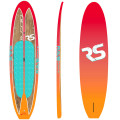
Shoreline Caribbean Series SS110
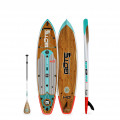
HD Gatorshell 10'6"
-first_product_boats.jpg)
10'0'' BEACH CROSS Tough-Tec
Shop hard paddleboards
Follow the links below to the Paddling Buyer’s Guide where you’ll find every hard paddleboard available along with specs, prices, reviews and places to buy.
Shop by type
Shop by material
Shop by brand
Bishop hard paddleboards
Boardworks hard paddleboards
Otto Vallinga hard paddleboards
Oxbow hard paddleboards
Pau Hana hard paddleboards
Pelican hard-shell paddleboards
Pygmy hard paddleboards
Rove hard paddleboards
SIC hard paddleboards
TAHE hard paddleboards
Vibe hard paddleboards
Shopping for a used hard paddleboard?
Since hard boards are typically more expensive than inflatables, buying used is a great way to make purchasing a hard board more affordable. When considering a previously owned board, look for chips, cracks, dings and repair jobs when you see the board in person. Any damage that shows the interior of the board is concerning. Ask when the damage happened, what repairs have been done, and if it’s taken on water. If the seller isn’t sure, it may save you stress to pass on the board, or you can take photos and ask a trusted board repair professional to see if it’s worth fixing.
Be sure to also ask the seller where the board has been stored.
“Delamination occurs often, especially for paddleboards that were left outside, exposed to the sun for hours, instead of keeping it in the shade when not in use,” say Keana and Nailani Cavero of Keanaila Surf Co.
When looking for used boards, check local surf and SUP stores to see if or when they sell their demo boards. Many established board brands also have a gently used or clearance category that may include a limited warranty. Buying from an individual is taking a chance with no warranty.
For more tips on what to look for when selecting a used paddleboard, read our article How To Buy A Used Paddleboard.
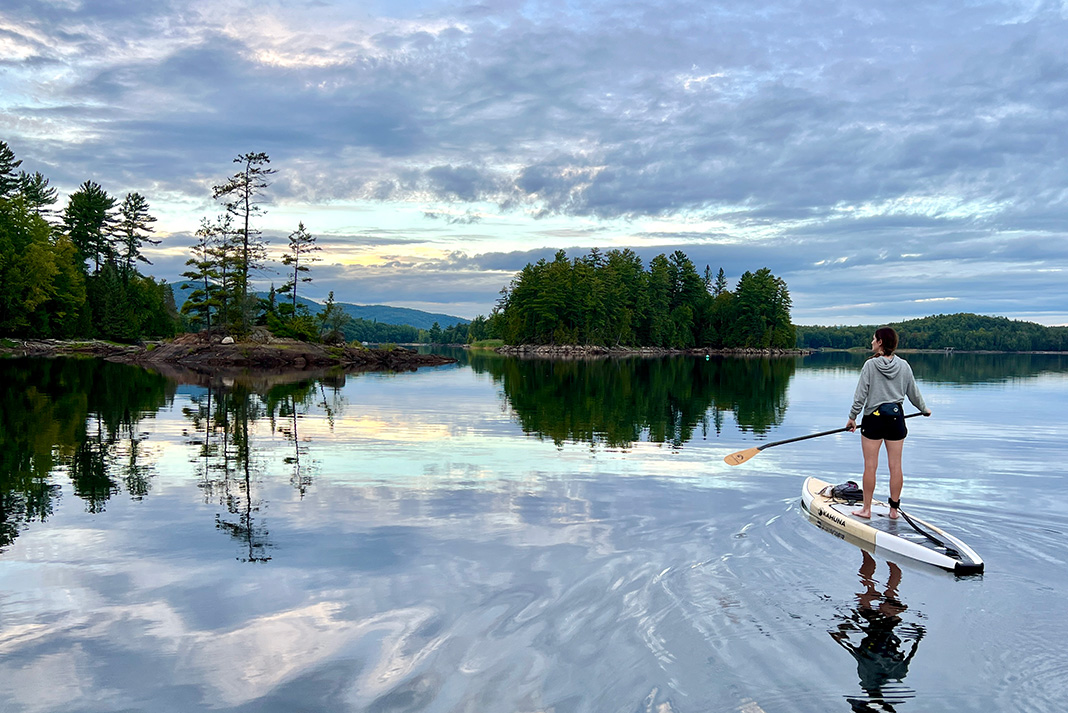
Hard paddleboard buying guide
With origins in surfing and cultures with vessels propelled by a person standing, the first standup paddleboards were rigid. Inflatables entered the market in the late 2000s and quickly became some of the most popular boards on the market.
For people with a limited budget, a lack of storage space and no roof rack on their vehicle, inflatable paddleboards have clear advantages over rigid. If you are looking for the most inexpensive options and a board that will fit in your closet and car, an inflatable is the way to go.
Likewise, if you are looking for the fastest, most efficient board and are planning to enter in races, go on long SUP journeys, or surf, a hard board is the right choice.
“Personally, if I have the choice when touring, I will always be on a hard board,” says Norm Hann, a SUP expedition leader and Paddle Canada instructor trainer. “I love the efficiency and speed you get in return from a hard 14-foot touring board. That efficiency and speed make a really big difference on long multiday expeditions where you can push your hourly kilometer rate higher than on an inflatable.”
If you fall somewhere between these sets of priorities, though, there are other considerations when deciding between a hard and inflatable paddleboard.
Some people find the setup and takedown time and effort of inflatables is an inconvenience. You’ll need to not only inflate the board at the put-in, but ensure the board is fully deflated and dry before folding it up to be put away again. There is also more room for user error with inflatables as you’ll need to ensure it’s inflated to the proper PSI. With a hard board, you can roll up to the put-in, untie your board, and hit the water.
Inflatable boards generally have more mounted-on handles and features, such as D-rings and straps, while hard boards have more shape and physical performance-based features, such as raised rails, drainage holes and valves. You’ll need to weigh which features you need for how you’ll be using the SUP.
Another advantage, Hann says, if you plan to tour with your SUP—hard boards can be more easily repaired in the field than inflatables.
“This past summer, one of our inflatable boards got a big hole in it on our Yukon trip,” he continues. “I had to pull over every couple kilometers to pump it up.”
That said, depending on what material it’s made of, a hard board can be more susceptible to damage than an inflatable. You should consider where you plan to paddle most and what hazards the put-in poses that might damage your hard board during a launch. Likewise, is there space to lay out an inflatable board to inflate?
“We see many more hard paddleboards needing repairs because they are more prone to damage and need a totally different type of care,” say Keana and Nailani Cavero of Keanaila Surf Co. “Dings usually happen from being careless or the board not being forgiving when accidents occur. Common accidents we see from our customers are people dinging it when trying to get it out of the house or storage room, like hitting the wall, stairs or doors.”
Once you’ve decided a hard board is right for you, here’s how to narrow down your options to find the perfect board.
Types
There are hard and inflatable board options for most types of SUPs. Whether a hard or inflatable is the better option in a given category is subjective to the paddler’s preferences, abilities and the environments they are using the board in. All-around paddleboards are suited to a variety of pursuits—including recreational touring, surfing and yoga—making them a popular choice among entry-level and casual paddlers. Most paddlers who prefer an all-around board also prefer inflatable construction, since these are less costly and easier to transport. However, if stability is a high priority, go with a hard board in this category.
Touring boards are shaped to maximize glide for efficiency over long distances and track straight, have multiple tie-down points, and have carry handles, making them ideal for camping trips and expeditions. A high-quality inflatable can provide respectable speed and glide, but to maximize these qualities, choose a hard touring board. Sometimes grouped with touring boards, race boards are narrower, lighter weight, and have pointier noses—all of which work together to make the board faster. Because speed is a priority, race boards are typically hard boards.
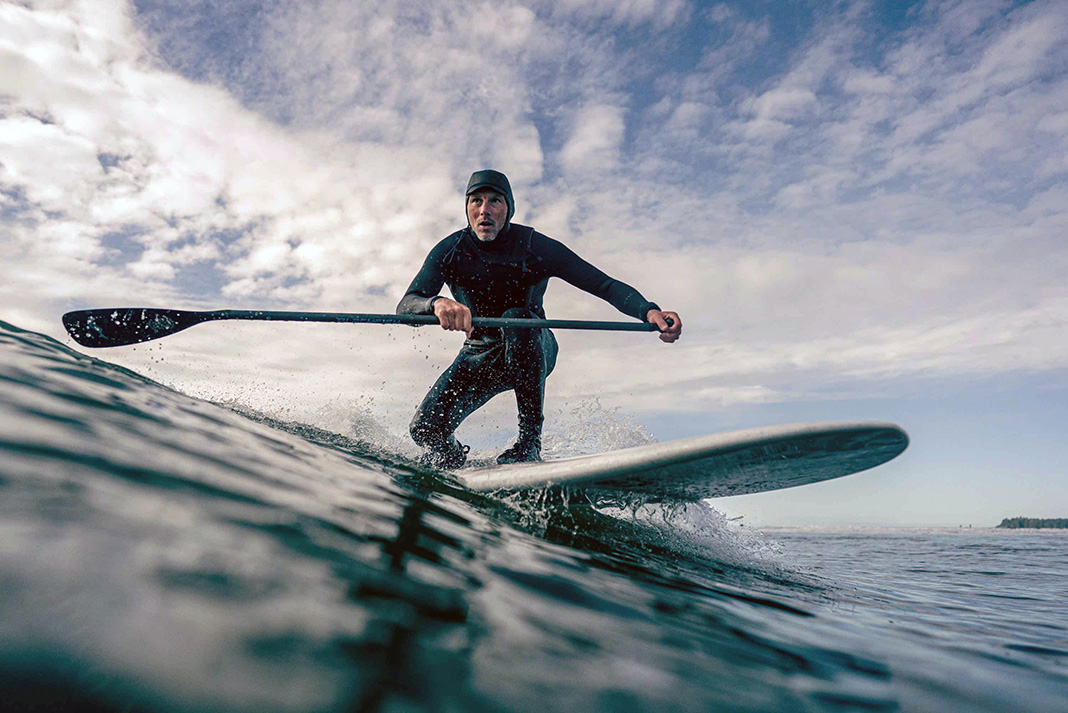
While inflatable models do exist, you’ll find most SUP surf boards are rigid. This is because hard boards provide better maneuverability, which is essential to surfing waves. Because stability is key for fishing on a paddleboard, most fishing paddleboards use a rigid construction. These boards are wide and thick, providing ample carrying capacity for all manner of gear.
To find out the differences between different types of paddleboards, read Paddleboard Types You Should Know Before You Buy.
Size
A properly sized paddleboard will be able to carry you and any gear, match your abilities and pursuits to ensure enjoyment on the water, and suit your lifestyle needs.
In brief, longer boards track better, while shorter boards are slower but more maneuverable. Wider boards are more stable, while narrower boards glide better. Lastly, the higher volume the board, the higher its weight capacity and buoyancy. Note that when comparing hard boards with inflatables of the same length or width, the board’s volume and carrying capacity can be significantly different.
With a hard board, you’ll also need to keep in mind your storage and transportation plans when considering its length and width. Will the board fit in the bed of your truck or in the spot you had picked out in your garage?
For a more in-depth explanation of different considerations when it comes to SUP sizes, read How To Size A Paddleboard.
Materials
The materials a board is made of can significantly affect its durability, performance, price and lifespan. Hard boards are made of one or a combination of the following materials. Carbon fiber is the most lightweight but most expensive material. It’s also the most susceptible to damage, which is best repaired by a professional. PVC, on the other hand, is more durable and cheaper than carbon, but not as lightweight.
You’ll find some wood boards on the market, which are typically covered with fiberglass or epoxy resin. Wood boards are durable and their weight will vary depending on the type of wood used. Fiberglass is often combined with wood, resin, and other materials and is typically used to reinforce a board; the number of layers provide greater strength and durability.
Lastly, expanded polystyrene foam (EPS), often referred to as “foam core,” is wrapped in other materials such as wood, PVC veneer, fiberglass and epoxy. It’s the main “filler” material in almost all hard boards.
Common Mistakes
One of the most common mistakes people make when buying a hard board is picking a board that’s not appropriate for their paddling ability or environment. Buying a high-end race board because you can afford to when you’ve only paddleboarded once may result in many frustrating paddling sessions as you struggle to understand “why the board is so tippy.”
Don’t be quick to blame the board. If you are new to paddleboarding, taking a few SUP lessons with a certified instructor will help identify your strengths and weaknesses so you can purchase a board that corresponds to your needs. Gaining some paddling skills will also help when testing boards out; it’s difficult to tell how a board performs if you aren’t paddling properly. Lessons are also a great opportunity to get to know how it feels to paddle differently sized and shaped boards.
Another common mistake is not considering how you will transport and where you will store a board. Perhaps you’ve decided on a hard board over an inflatable because you have a roof rack on your vehicle and a backyard, but the considerations don’t end there. Can you cartop the board by yourself? Are you prepared to take the time to properly store the board outside to avoid warping and sun damage?
Lastly, many make the mistake of buying a lower quality board but expecting high performance. Buy the best board you can, but be sure to do your research so you set realistic expectations for when you’re out on the water.
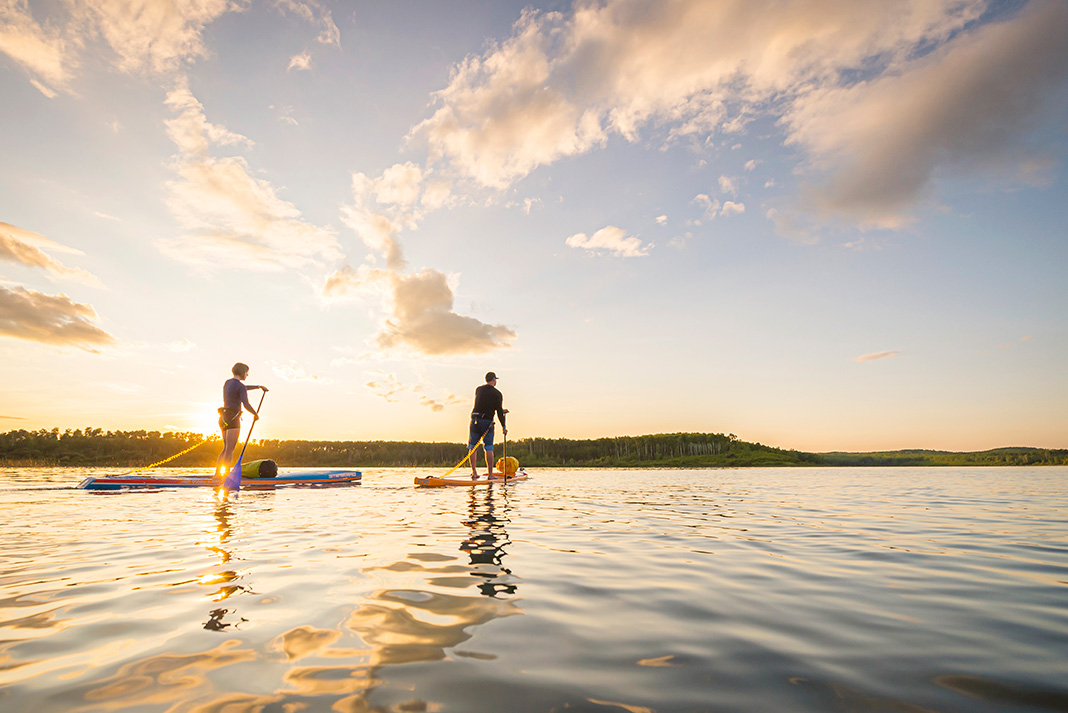
Where to buy
You can find hard paddleboards at a range of stores, from box stores to specialty paddlesports shops. Sometimes even grocery stores. Even if you don’t plan to buy a board from your local paddling shop, it can be helpful to make this your first stop to get advice about what type of board will suit your needs best. The knowledgeable sales staff can help point you in the right direction as well as let you know what other gear you should make sure to purchase, such as a PFD, paddle and leash.
Here are expert answers to some of the most common questions from rigid paddleboard buyers.
-
What is a hard paddleboard called?
Hard paddleboards are sometimes also called rigid paddleboards. The name is meant to differentiate them from inflatable paddleboards.
-
Are hard paddleboards better?
Whether a hard paddleboard is better than an inflatable can be a matter of preference or intended use. The rigidity of hard paddleboards can make them more efficient when touring and maneuverable for surfing. They are also preferred by folks who don’t want to deal with inflating or deflating a board.
-
Are hard paddleboards more stable?
Many people assume that because a hard paddleboard is more rigid than an inflatable that they are automatically more stable. However, stability has much more to do with the width of a board than the material it’s made out of. The wider a board, the more stable it will be. When properly inflated, an inflatable board will provide comparable stability to a hard board of the same dimensions.
-
Are hard paddleboards easier?
Whether a paddleboard is easy for a beginner to use depends more on the type of board than its construction. All-around paddleboards—either hard or inflatable—are great for beginners, providing ample stability.
Someone looking for a board that makes touring—traveling long distances—easy would prefer a hard board, since its rigid construction helps it glide more efficiently. However, someone who is looking for a board that will be easy to store and transport would prefer an inflatable board.
-
How long do hard paddleboards last?
If properly cared for, a hard paddleboard can last a lifetime. Store the paddleboard inside, away from the sun’s harmful UV rays.
-
How do you transport a hard SUP?
Many people choose to transport their hard SUP on the roof of their vehicle, either by using a roof rack or foam blocks. If you have a truck, it may also be an option to transport the board in the truck bed. The most important thing is to make sure the SUP is properly secured on the vehicle. For more information, read How To Transport A Paddleboard.
-
Inflatable paddle board vs hard
The advantages of an inflatable paddleboard relate to the portability and use of the board. For paddlers who are tight on storage space and/or want a board that is easy to transport to and from the water, inflatable standup paddleboards are ideal. They pack easily into a duffel and can be stored in a small closet or the trunk of a car.
For an all-around paddleboard, an inflatable SUP is an excellent choice for beginner paddlers as the deck (top) of the board is softer and more forgiving than a solid hardboard should you accidentally fall on it. This also makes inflatable paddleboards a great fit for SUP yoga and kids or family paddlers.
Compared to solid hardboards, inflatable paddleboards actually offer equal or even greater durability. An inflatable SUP board will bounce off rocks and flex on impact, while solid paddleboards can crack or dent on impact, depending on the materials they’re made from.
Proper storage is key to the longevity of any paddleboard, but you’ll want to be especially careful that inflatable boards are dry and clean before being folded away for storage.
Performance-wise, a hardboard has the edge for anyone who is looking to do serious paddleboard surfing or racing. Solid boards flex less than inflatables, resulting in better efficiency, responsiveness and glide, so these boards excel in high-performance situations where speed and agility are important.
Surfers also prefer rigid boards because they can be made thinner, allowing for greater maneuverability so the board can “carve” (perform sharp turns and cutbacks) on waves.
-
Hard paddleboard price
The price of a hard paddleboard will vary greatly depending on the type and materials used. An entry-level, all-around paddleboard might be as low as $300 while a high-end performance race board can be upward of $5,000.
Hard paddleboard reviews
Help narrow your search for the perfect rigid paddleboard by reading our expert reviews.
- Hybrid SUP Kayak Review: Hobie Mirage Lynx
- Hybrid Fishing SUP Review: Vibe Cubera 120
- Vibe Kayaks Premiers Maverick 120 SUP At ICAST 2018
- Hobie Mirage Eclipse SUP Board (Video)
- Video: C4 Waterman’s 2017 Pono SUP Board
- Video: Pelican’s New Moorea Composite SUP Boards
If you’re on the right board, you’ll forget it’s even there—leaving you to focus on scenery like this instead. | Feature photo: Chris Hendrickson, Tourism Saskatchewan





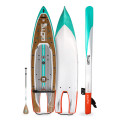

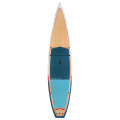
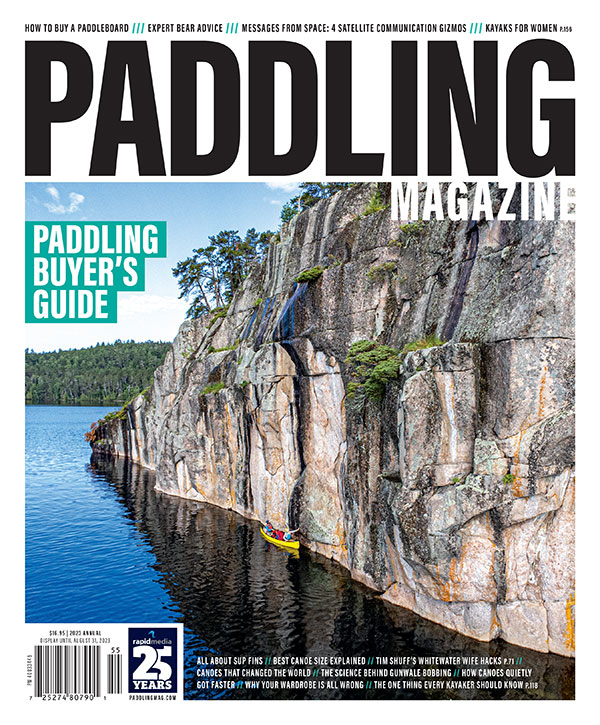 This article was first published in the 2023 Paddling Buyer’s Guide.
This article was first published in the 2023 Paddling Buyer’s Guide. 
